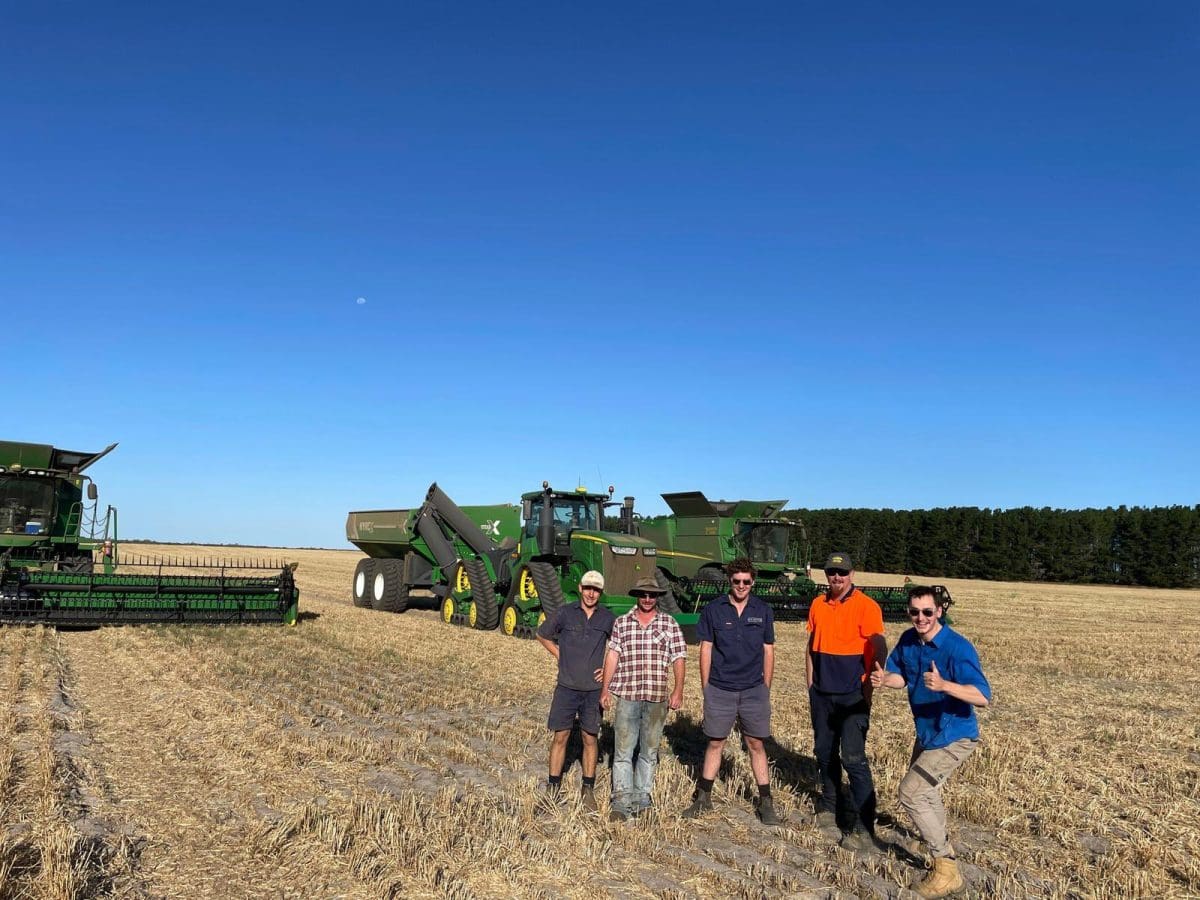
Harvest finished last week at this farm north of Esperance. Photo: Tom Curnow
WESTERN Australian bulk handler CBH Group has received 2.5 million tonnes (Mt) of grain in the week to today to take its total intake for the current harvest to 18.3Mt.
In its latest Harvest Report, CBH Group said it broke its all-time receival record on December 13, surpassing the 2016-17 harvest receival record of 16.6Mt.
“A number of sites and zones have broken, and continue to break, their daily and seasonal receival records,” CBH Group chief operations officer Mick Daw said.
“Prior to this year, there had only ever been five days in history with over 500,000t received in one day and this year alone there have been 11 days.”
“For perspective, we have received over 9.76Mt in the past 23 days, which is more than the entire 2019-20 harvest.”
Mr Daw said while the rapid rate of harvest was exhilarating, it put significant pressure on CBH sites and services.
“We are now in uncharted territory as we continue to receive the remainder of Western Australia’s largest ever grain harvest.”
CBH sites will close at lunchtime on December 24 for the Christmas break, and some will reopen on December 27.
Global markets softens
Lower international values dragged the wheat complex lower, with APW1 closing last week at around $375/t free in store (FIS) Kwinana.
The APW1 price has fallen around $70/t in the past 14 days, and growers have now started to limit volumes sold.
International customers have been a little quieter for the first half of the year, with end-users mainly covered following an aggressive buying program over the past few weeks.
Feed wheat ex eastern Australia remain very competitive, and has placed pressure on prices out of WA.
A number of South-east Asian customers are purchasing Indian wheat to cover their requirements.
Barley prices have also eased, with limited volume interest from the major Middle East markets, and a large percentage of buyers covered until mid-2022.
At this stage, South-east Asian demand for barley has been subdued as its nations continue to consume their local corn crops.
On malting barley, premiums are being seen for Spartacus, with values $20/t above feed values.
The market has been sourcing good-quality Spartacus for both domestic and international end-users.
Canola markets also drifted lower, finishing last week at $870/t FIS Kwinana for non-GM.
The majority of European crushers are covered until mid-2022 and looking to see the Northern Hemisphere crops before committing to additional volumes.

Following is a round-up of conditions by CBH zones:
Albany Zone
The Albany zone had good harvesting weather last week, resulting in its biggest week for the current harvest.
The majority of growers have now finished harvesting canola, and have moved on to barley, wheat and oats.
All sites are open and are receiving grain.
Over the next four to seven days, some sites are expected to fill and close.
Esperance Zone
Good harvesting weather saw wheat continue to dominate receivals, with barley, canola, lupins and field peas trickling in.
Minor quality issues have been seen in the known lower-quality crops that growers have left to harvest at the end of their programs.
Munglinup, Cascades, and Lake King are closed due to filling.
Geraldton Zone
The Geraldton Zone last week broke its previous receival record of 3.55Mt, and now sits at 3.66Mt.
Mingenew became the first site in the network other than CBH’s terminals to receive 600,000t for one harvest.
The majority of growers have finished harvesting, and some sites are closed due to being full.
Others will fill and close before Christmas.
Kwinana North Zone
The Kwinana North Zone had good harvesting conditions in the past week, and mainly wheat is being received, with very low tonnages of other commodities.
Some sites are now full and closed, and many growers will finish harvest by early next week.
Kwinana South Zone
The Kwinana South zone had good harvesting conditions last week, but harvest bans related to hot weather in the past week slowed receivals a little.
Mainly wheat was being delivered, although the Avon area was still receiving both canola and barley in low volumes.
Some sites across the zone will fill and close in the next two to seven days.
Source: CBH Group

HAVE YOUR SAY